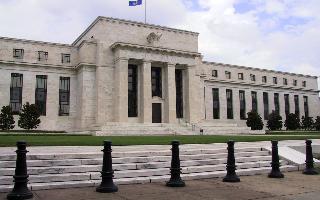
WASHINGTON, DC - Housing will be a big part of this week's economic news. The Federal Reserve's decisions at its Mar. 17-18 policy meeting are sure to heighten the attention on housing activity in coming months. The Fed's intentions to purchase Treasury notes and expand its plans to buy mortgage-backed securities from federal agencies are expected to generate a further significant drop in mortgage rates. Only minutes after the Fed's announcement, the yield on the benchmark 10-year note dropped about a half-point to 2.5%. Analysts believe 30-year fixed mortgage rates could eventually fall close to 4% from just about 5% currently.
The housing surprise in the previous week was a steep 22% rise in February housing starts. Much of that gain reflected a surge in multifamily units, which can be volatile from month to month, but the more important single-family sector also showed a 1.1% increase in starts and big 11% rise in permits to begin new construction. These latest numbers are most likely not a sign that homebuilding is stabilizing, but they do suggest at least a slowing the recent rapid rate of decline. Total starts have dropped 80% from their peak in 2006.
Based on an early-March survey, builders a remain as downbeat as ever about current and future market conditions. That sentiment is based on continued weakness in sales, which will get an update for February this week. In particular, sales of new homes show no sign of bottoming out. They dropped 10.2% in January to another record low. The good news is that the level of homebuilding continues to run well below the comparable measure of home sales, a situation that has allowed builders inventories to shrink considerably over the past year. The problem is that sales are still falling even faster than inventories, causing the months supply of new homes on the market to rise to a record 13.3 months in January. If Washington's efforts to boost demand are successful, the months supply could begin to fall rapidly, given the exceptionally low level of starts in relation to demand.
The bad news is that home prices are likely to keep falling, although perhaps at a slower rate, as the government's programs begin to gain traction. The Fed's newest efforts to lift home demand should complement other government initiatives to revive housing and slow the decline in home prices. Analysts believe the Housing Affordability and Stability Plan has the potential to reduce foreclosures and boost refinancing. Refi activity has fallen off in recent weeks, despite low mortgage rates, suggesting that many homeowners may be holding back, waiting for the new program. That, plus lower rates as a result of Fed actions, could result in a refi boom this summer, which would lower payments for many homeowners and act like a tax cut.
The biggest problem working against housing right now is the recession. Unemployment is sure to head higher this year, pushing many potential buyers out of the market and scaring off many others who fear losing their jobs. Even as Washington continues to lay the groundwork for a housing turnaround, any upturn is sure to be slow in coming.
Source: businessweek.com